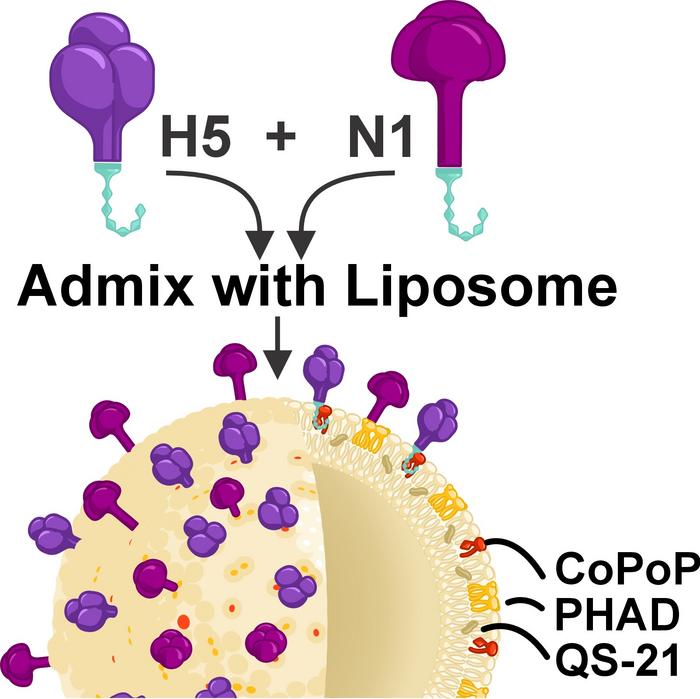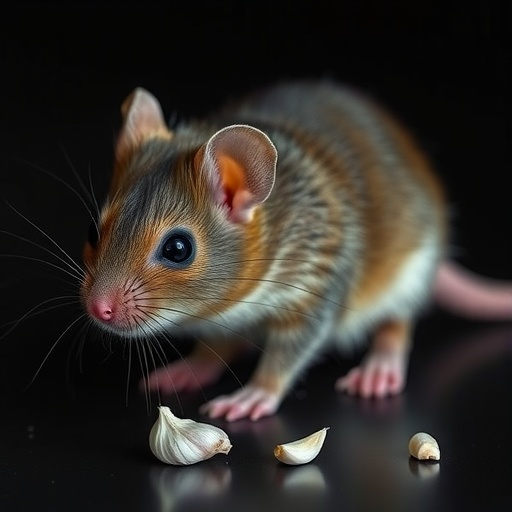Central to this innovative vaccine’s success is its ability to precisely incorporate two pivotal viral proteins: hemagglutinin (H5) and neuraminidase (N1). These proteins are integral to the virus’s infectious cycle, with hemagglutinin facilitating viral entry into host cells, while neuraminidase plays a crucial role in the release and spread of new viral particles. Unlike many existing vaccines that primarily target the hemagglutinin protein, this platform explores a bivalent approach, combining immune targets to potentially enhance protection and broaden the vaccine’s efficacy against viral mutations.
The platform leverages recombinant protein technology, eschewing traditional egg-based vaccine production methods. Instead, the H5 and N1 proteins are engineered with a histidine tag—a short amino acid sequence with a natural affinity for metals—that allows them to bind efficiently and specifically to cobalt ions embedded within cobalt-porphyrin-phospholipid (CoPoP) nanoparticles. This nanoparticle scaffold forms the core of the vaccine delivery system, providing a stable and versatile platform that presents antigens in a manner that effectively stimulates the immune system.
Preclinical trials conducted on mice exhibited compelling results: administration of hemagglutinin alone conferred full protection, completely preventing signs of illness, weight reduction, and viral replication within lung tissues. The neuraminidase-only formulation, while providing partial immunity with approximately 70% effectiveness, demonstrated the capacity to reduce viral load and disease severity, underscoring the importance of neuraminidase antibodies in modulating infection. Interestingly, the combination of H5 and N1 as a bivalent vaccine did not surpass the efficacy observed with hemagglutinin alone, suggesting a predominant role for hemagglutinin in protective immunity but reaffirming the supportive benefits of neuraminidase-targeted responses.
The CoPoP nanoparticle’s design not only supports antigen presentation but also incorporates potent adjuvants—including QS-21, a saponin derivative known to enhance cellular and humoral immune responses, and PHAD, a synthetic monophosphoryl lipid A derivative acting as a Toll-like receptor 4 agonist. Both adjuvants are embedded within the phospholipid bilayer shell, amplifying the vaccine’s immunogenicity by promoting a robust and durable immune activation. This molecular synergy enables the platform to elicit broad-spectrum protection with potentially improved durability and response quality compared to conventional vaccines.
From a molecular perspective, the strategic use of histidine-tagged antigens exploits the affinity between imidazole side chains of histidine residues and transition metal ions, fostering swift and stable antigen attachment without compromising protein conformation or function. This design ensures that the antigens display native epitopes essential for inducing neutralizing antibodies and T-cell responses, a feat difficult to achieve in many subunit vaccine approaches.
Moreover, the research highlights the nuanced roles of viral glycoproteins in immune defense. Hemagglutinin serves as the viral key for host cell interaction, dictating entry specificity and initial infection, which makes it a prime neutralizing antibody target. Neuraminidase, acting as an enzymatic scissors, cleaves sialic acid residues to facilitate virion release, and while antibodies targeting N1 are non-neutralizing in the classical sense, they reduce viral dissemination and disease severity, contributing to overall vaccine efficacy. This understanding of immunological mechanisms reinforces the rationale for including multiple antigenic components to counteract viral escape mutations.
Looking ahead, the UB team intends to expand their evaluations by experimenting with dosage variations, vaccination schedules, and administration routes to optimize the vaccine’s protective effect and practical deployment. The multi-institution collaboration, spanning public health agencies, national microbiology laboratories, veterinary research centers, and biotech firms, exemplifies the integrative approach necessary to combat complex zoonotic threats effectively.
The research, slated for publication in the prestigious journal Cell Biomaterials, epitomizes cutting-edge advances that could redefine influenza vaccination frameworks and fortify global preparedness against evolving viral pathogens.
Subject of Research: Avian influenza vaccine development targeting H5N1 variant 2.3.4.4b using a cobalt-porphyrin-phospholipid nanoparticle platform.
Article Title: University at Buffalo Develops Novel Nanoparticle Platform Achieving Complete Protection Against Deadly H5N1 Avian Influenza Variant in Mice
News Publication Date: 17-Apr-2025
Image Credits: University at Buffalo
Keywords: Avian influenza, Flu vaccines, Animal research, Influenza viruses, Bond formation, Vaccine development, Wild birds, Public health, COVID 19, Recombinant proteins, Cell division, Animal models
Tags: animal studies vaccine efficacyavian influenza H5N1 vaccinebird flu vaccine researchbivalent vaccine approachcross-species infection preventionemerging infectious diseaseshemagglutinin and neuraminidase proteinsinnovative vaccine platformsrecombinant protein vaccine technologyUniversity at Buffalo research breakthroughsvaccine development for poultry diseasesveterinary vaccine advancements





